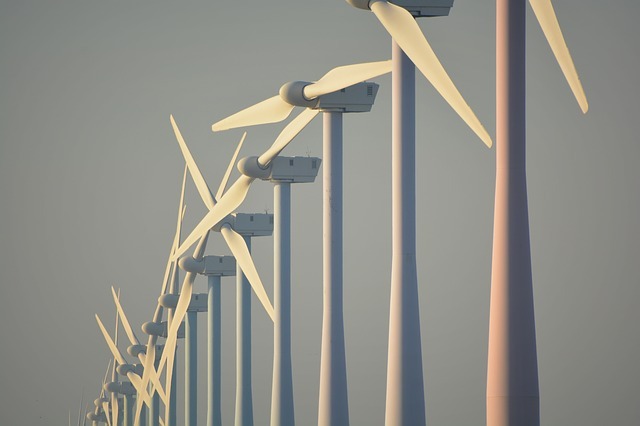Saudi Arabia will become a regional heavyweight in windpower by the early 2020’s, according to new research.
A report by analysts at Wood Mackenzie Power & Renewables states that developers will build 6.2 GW of wind capacity between now and 2028.
And yet the report predicts that despite growth projections and imminent regional leadership, Saudi Arabia will fall short of its current 2030 renewables target.
Sohaib Malik, Wood Mackenzie Power & Renewables Senior Analyst, said: “The integration of renewables in Vision 2030’s objectives underlines strong political commitment within Saudi Arabia. The level of Saudi ambition for wind and solar PV varies significantly, despite the cost parity between both technologies during the first round of tenders in 2018.
“The 300 MW Sakaka PV project was awarded to ACWA Power at $23.4/MWh and the 400 MW Dumat Al Jandal wind project at $21.3/MWh to EDF and Masdar. Despite offering comparable prices and more rigorous industrial development opportunities, the wind power capacity target is set at 16 GW by 2030 and solar PV at 40 GW, indicating the government’s preference for the latter.
He added that moving forward, “the Renewable Energy Project Development Office (REPDO) will award 850 MW of wind capacity in 2019, which is expected to be commissioned in 2021-2022, and increase the local content requirement in future tendering rounds”.
However, he explained that in January the Saudi government revised its renewable energy targets upward, “resulting in enhanced visibility through 2030. It earmarked 70 per cent of target renewables capacity for the Public Investment Fund (PIF), the Saudi sovereign wealth fund, while the remaining capacity is to be awarded through REPDO. The new mechanism highlights concerns that will define the future of Saudi Arabia’s wind market.
“A central concern is the PIF’s lack of track record in the renewables sector and its limited in-house sectoral expertise. REPDO, on the other hand, completed two renewables request for proposals after pre-developing the sites. PIF is estimated to have $230bn of assets – targeted to reach $2 trillion under Vision 2030 – driven by investments in a variety of sectors ranging from electric vehicles to public infrastructure.
“There is little doubt about the fund’s financial muscle, however its past investment strategy focused on established firms in traditional industries. Aspirations to develop a value chain for wind and PV technologies locally is a different ball game and requires the PIF to acquire new capabilities for effective oversight of these ventures,” said Malik.
Wood Mackenzie says regional volatility in the Middle East is expected to remain. Strong positive growth, driven by Jordan and Iran, in 2018 is expected to reverse in 2019. However, Wood Mackenzie sees regional demand returning to steady growth post-2020.
Malik said: “In 2018, developers added 185 MW and 63 MW of wind capacity in Jordan and Iran, respectively, compared to 53 MW of capacity across the entire region in 2017. The completion of the 89 MW Al Fujeij and the 86 MW Al Rajef projects in 2018 indicates that Jordan has 375 MW of the region’s operational 675 MW wind capacity.
Iran followed with 278 MW of installed capacity at the end of 2018. A slowdown in 2019 is expected, as project development activity softens in Iran. Additionally, delays in awarding the 400 MW Dumat Al Jandal project in Saudi Arabia will limit annual capacity additions to 184 MW, according to the report.
“A maturing project pipeline within the region supports the 2020-2021 outlook. Saudi Arabian demand serves as the foundation for regional demand. Regional demand diversification is also occurring, with Lebanon set to add 200-400 MW to its existing permitted capacity pipeline of 202 MW in 2019. These developments pave the way for the addition of 2GW of wind capacity between 2019 and 2021,” added Malik.
The outlook for solar PV in the Middle East, when compared to wind, is much more positive – boasting an ideal environment for development.
Malik said: “Compared to only 6 GW of wind power capacity, developers will add 53 GW of PV capacity through 2024. Solar PV has become a natural choice for many countries in the region, which is endowed with world class solar energy resources. The increased focus on solar energy is demonstrated by ambitious PV targets across the region.
“As the countries with stable macroeconomic outlooks began auctioning larger projects, such as Kuwait, Saudi Arabia and UAE, developers offered some of the world’s lowest solar PV tariffs. As such, it will become increasingly difficult for wind to compete with PV in low wind countries including Bahrain, Qatar and the United Arab Emirates.”





